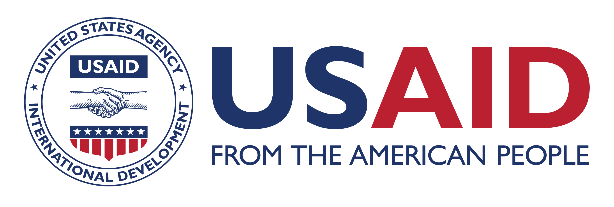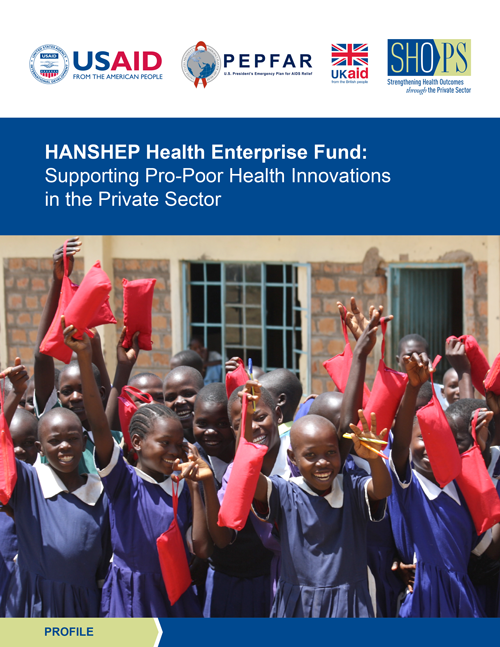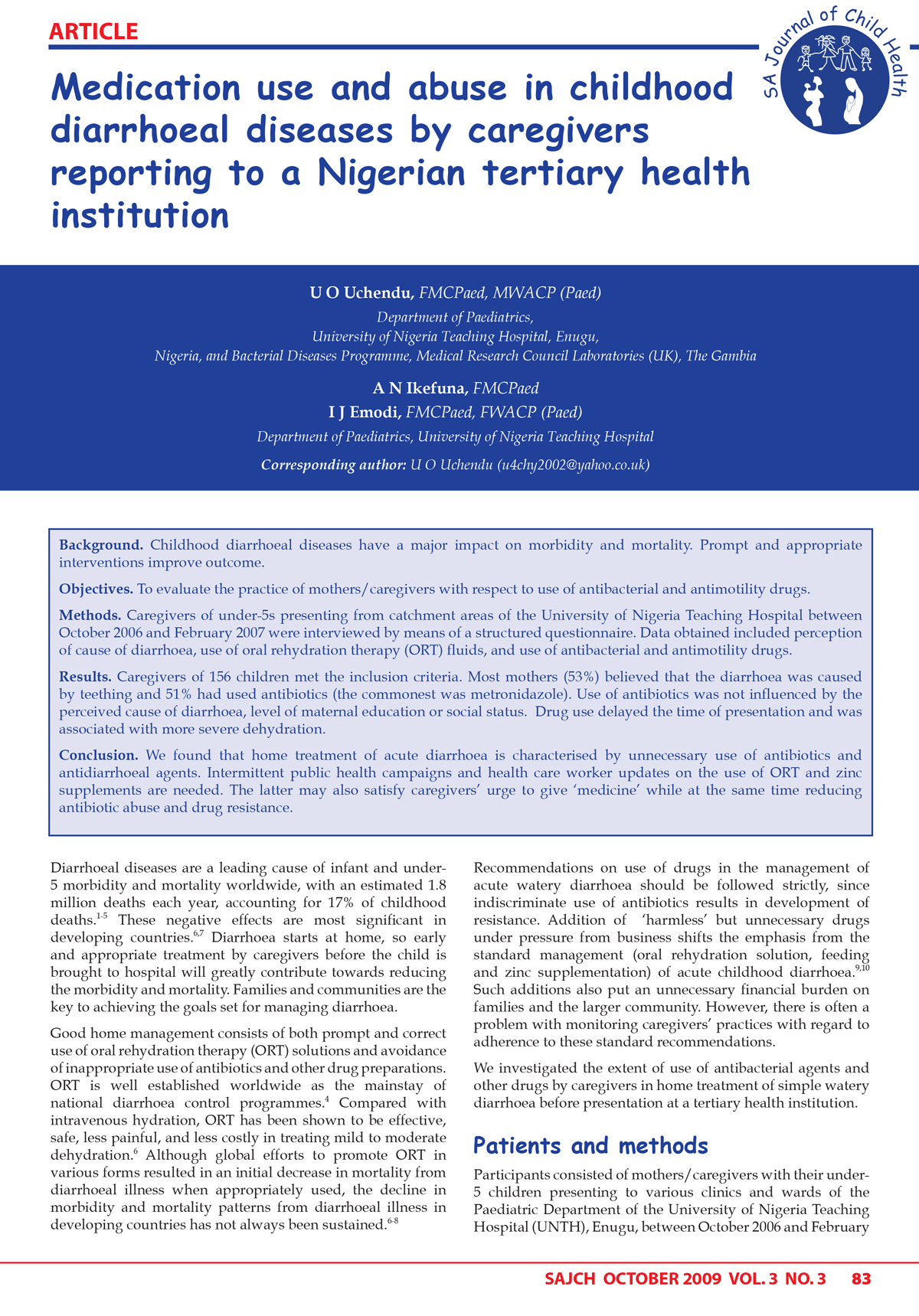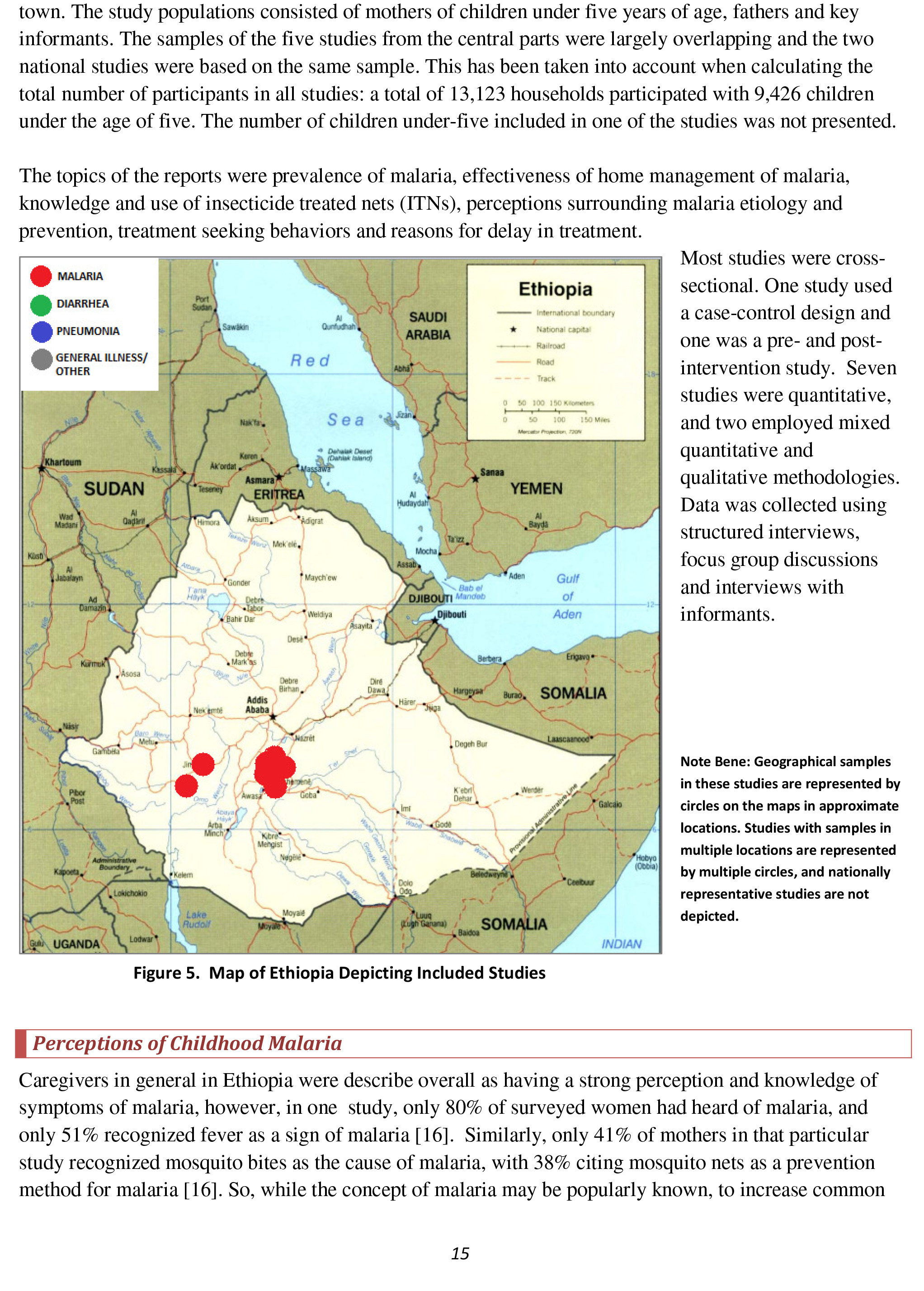
Resource Library
HANSHEP Health Enterprise Fund: Supporting Pro-Poor Health Innovations in the Private Sector
From 2013 to 2015, the Strengthening Health Outcomes through the Private Sector (SHOPS) project implemented the HANSHEP Health Enterprise Fund in Ethiopia, Kenya, and Nigeria. The fund was designed to identify innovative and replicable private sector solutions that address critical health priorities of the poor in sub-Saharan Africa. Through timely investment and targeted technical assistance, the fund supported 16 small businesses to establish proof of concept or to scale their models sufficiently to generate revenue. This profile describes the selection and implementation processes of the fund and highlights several of the grantees’ business models. It also includes the results achieved by the fund and lessons learned to inform future challenge funds.
Resource Type : Report
Country : Ethiopia, Kenya, Nigeria
Year : 2015-05-18T00:00:00
Language : English
Project : SHOPS

Resource Library
Using Total Market Approaches in Condom Programs
This primer presents a framework for developing and implementing a total market strategy for condom programming. A total market strategy uses the comparative advantages of all sectors—public, nonprofit, and commercial—to strengthen programs that distribute condoms for the prevention of HIV. Such efforts can increase the number of condom users, reduce the need for subsidies, increase access to condoms, and reduce the financial burden of HIV prevention activities on the public sector. The primer discusses supply- and demand-side indicators for identifying the development stage of a country’s condom market, identifies total market interventions based on the market stage, and provides additional resources for forecasting condom needs.
Resource Type :
Country : Ethiopia, Nigeria, Paraguay, Peru
Year : 2015-01-16T00:00:00
Language : English
Project : SHOPS

Resource Library
Medication use and abuse in childhood diarrhoeal diseases by caregivers reporting to a Nigerian tertiary health institution
Childhood diarrhoeal diseases have a major impact on morbidity and mortality. Prompt and appropriate interventions improve health outcomes.
The objectives of the study were to evaluate the practice of mothers/caregivers with respect to use of antibacterial and antimotility drugs.
To meet this objective, caregivers of under-5s presenting from catchment areas of the University of Nigeria Teaching Hospital between October 2006 and February 2007 were interviewed by means of a structured questionnaire. Data obtained included perception of cause of diarrhoea, use of oral rehydration therapy (ORT) fluids, and use of antibacterial and antimotility drugs.
The results showed that caregivers of 156 children met the inclusion criteria. Most mothers (53%) believed that the diarrhoea was caused by teething and 51% had used antibiotics (the commonest was metronidazole). Use of antibiotics was not influenced by the perceived cause of diarrhoea, level of maternal education or social status. Drug use delayed the time of presentation and was associated with more severe dehydration.
From the results of the study it was concluded that home treatment of acute diarrhoea is characterised by unnecessary use of antibiotics and antidiarrhoeal agents. Intermittent public health campaigns and health care worker updates on the use of ORT and zinc supplements are needed. The latter may also satisfy caregivers’ urge to give ‘medicine’ while at the same time reducing antibiotic abuse and drug resistance.
Resource Type : Brief
Country : Nigeria
Year : 2009-10-01T00:00:00
Language : English
Project : SHOPS

Resource Library
Knowledge, Attitude, and Practice of Home Managment of Childhood Diarrhoea amoung Caregivers of Under-5 Children with Diarrhoeal Disease in Northwestern Nigeria
Diarrhoeal diseases (DDs) constitute a public health problem. This is a cross-sectional study done of home caregivers with children aged 1-59 months with diarrhoea. Subjects were randomly selected at community primary health centres in northwestern Nigeria. The outcomes measured were knowledge, attitude, and practices regaring home managment of diarrhea. The resulst show that less than 1% of caregivers were knowledgeable about home management of DD. Antibiotics and anti-diarrhoeal agents use was common at 36%. ORS use was abysmally low at 8.6%. Only 32% of caregivers were aware of the use of zinc in the management of DD. Adherence to 10-day zinc supplementation was encouraging at 75.5%. The study concluded that there is an urgent need to scale up educational and promotional activities with regards to the home management of DD if the millennium development goals are to be met.
Resource Type : Brief
Country : Nigeria
Year : 2011-06-03T00:00:00
Language : English
Project : SHOPS

Resource Library
Management of childhood diarrhea by patent medicine vendors in Enugu north local government area, South-east Nigeria
The study was a descriptive cross-sectional study carried out in Enugu North LGA, Enugu State, Nigeria in November, 2008. Ninety patent medicine vendors were studied using semi-structured interviewer administered questionnaires. Information on knowledge and management of diarrhea in under-fives was obtained. The patent medicine vendors had good knowledge (64.0%) of the types, causes, signs and effects of diarrhea but their knowledge on steps to prevent or improve diarrhea outcome was poor (33.3%). Their knowledge of therapeutic use of oral rehydration solution (ORS) and salt sugar solution (SSS) was also poor (46.9%). Though sixty-two (68.9%) respondents identified ORS as their first line treatment of diarrhea in children, nineteen (21.1%) of them do not stock ORS. Metronidazole is the drug most commonly used in management of childhood diarrhea. The knowledge of patent medicine vendors on the prevention of diarrhea in children is poor. There should be routine health education campaign on appropriate management of mild childhood diarrheal diseases.
Resource Type : Brief
Country : Nigeria
Year : 2010-03-01T00:00:00
Language : English
Project : SHOPS

Resource Library
Health-care-seeking behaviour for childhood illnesses in a resource-poor setting
The aim of this study is to determine health-care-seeking behaviour for childhood illnesses in a resource-poor setting.
Cross-sectional survey was conducted in the children emergency room in a Nigerian tertiary hospital. Socio-demographic data and details of the place and type of care given to ill children before presentation in the tertiary hospital were obtained.
A total of 168 mother-child pairs were studied. The leading illnesses were characterised by fever (35.1%), cough (26.2%) and stooling (19.1%). Initial care was sought within homes (57.1%) and after 24 h of onset (61.9%). A significantly higher proportion of the mothers who sought care within 24 h did so within the homes (P < 0.001). Only 38.1% of the mothers felt that the illnesses were severe. Although 66.7% lived close to orthodox health facilities, only 50.6% utilized such orthodox health facilities. Care was mostly sought outside the homes from drug vendors (55.5%) and private clinics (25.0%). Overall, 72.2% of the mothers administered various drugs to their children before presentation. Home care mainly involved the use of drugs (52.1%) and herbal preparations (15.6%). Care was sought within 24 h of onset for children with fever compared with those with cough (P < 0.001) and stooling (P < 0.001). The leading reasons for not utilising orthodox health services at the onset of illnesses included non-recognition of the severe nature of the illness and poor finances.
Care-seeking for childhood illnesses was often delayed beyond 24 h, and most mothers sought care within homes. Health education is required to improve timely seeking of appropriate health care for childhood illnesses
Resource Type : Brief
Country : Nigeria
Year : 2010-05-01T00:00:00
Language : English
Project : SHOPS

Resource Library
Interactions between patent medicine vendors and customers in urban and rural Nigeria
Patent medicine vendors (PMVs) supply a large portion of the drugs used by the public in African countries to treat their illnesses. Little has been reported about what actually transpires between PMVs and their customers, but nevertheless, concerns have been raised about the potential for abuse of their position. This study conducted 720 observations of PMV-customer interaction in 444 medicine shops in both the metropolis of Ibadan and the rural town of Igbo-Ora in Oyo State, Nigeria. Each interaction lasted 2 minutes on average. A quarter of the customers shared their illness problems with the shop attendant, 9% presented a prescription and the majority simply requested items for purchase. Most customers (73%) were buying drugs for themselves, while the remainder had been sent to purchase for another person. The former were more likely to be adults, while the latter were more often children and adolescents. The most common PMV behaviours are: selling the requested medicine (69%), giving their own suggestions to the customer (30%), asking questions about the illness (19%) and providing instructions on how to take the medicine (21%). Only three referrals were observed. The large number of specific drug requests was evidence of a public that was actively involved in self-care, and thus the major role of the PMV appeared to be one of salesperson meeting that need. A second role became evident when the customer actually complained about his/her illness, a practice associated with the more active PMVs who asked questions, gave suggestions and provided information. These PMV roles can be enhanced through consumer education, PMV training and policy changes to standardize and legitimize PMV contributions to primary health care.
Resource Type : Brief
Country : Nigeria
Year : 2004-01-01T00:00:00
Language : English
Project : SHOPS

Resource Library
Perception, Management and Barriers to Care-seeking for Childhood Diarrhea, Malaria, and Pneumonia
This report describes the findings of a literature review examining the perceptions and practices of caregivers responding to childhood pneumonia, diarrhea or malaria. A literature search was conducted using the electronic databases PubMed, PsycINFO, Global Health (EBSCO), CINAHL Plus, SocINDEX, and Africa-Wide Information. Quantitative and qualitative studies of childhood illness perceptions and care-seeking behaviors in Ethiopia, Kenya, Niger, Nigeria and Uganda from 2001-2011 were reviewed. There were many similarities across the five country settings concerning care-seeking practices. A common response to childhood illness was to provide initial care in the home or to obtain treatment from a nearby source. The preferred source of care for a sick child varied across location and from urban to rural setting. However, the most common sources of care often included clinics or drug shops. Recommendations include: 1) improve caregiver education 2) make effective drugs available and accessible to community, through drug vendors or community health workers and 3) target drug shops in an effort to improve demand for appropriate care as caregivers frequently sought treatment from the retail sector.
Resource Type : Report
Country : Ethiopia, Kenya, Nigeria, Uganda
Year : 2012-02-15T00:00:00
Language : English
Project : SHOPS

Resource Library
Care-seeking behaviour of caregivers for common childhood illnesses in Lagos Island Local Government Area, Nigeria
The objectives of the study were to estimate a 2-week prevalence for common childhood illnesses
targeted by the National Integrated Management of Childhood Illness (IMCI) Initiative and to determine care-seeking behaviour of mothers/caregivers for these illnesses.
A cross-sectional community survey was conducted in the Lagos Island Local Government Area of Lagos State in Nigeria. Eligible children aged 0-5 years and their mothers/caregivers were recruited into the study by cluster-sampling technique.
Four hundred and ninety-five children of 450 mothers were identified. Of these, 426 (86.1%) children belonging to 390 mothers/caregivers had symptoms suggestive of malaria, acute respiratory infections, diarrhoea and measles. Care was sought Outside the home at the onset of symptoms for 280 (65.7%) while 146 (34.3%) were treated at home. Of the 280 who were taken for care outside, 23 (8.2%) were taken for care at the onset of illness while the others were taken for care after an attempt at self-treatment (68.6%), use of traditional medicines (12.5%) and provision of traditional home care (10.7%). Only 65 (23.2%) of the children were taken for care within 24 hours of perceived onset of the illness.
IMCI targeted childhood illnesses were prevalent and poor maternal response that could contribute to complicated outcome was identified.
Resource Type : Brief
Country : Nigeria
Year : 2005-01-01T00:00:00
Language : English
Project : SHOPS

Resource Library
Home management of childhood diarrhoea: Need to intensify campaign
A review of home management of childhood diarrhea in under-five children among 203 Nigerian mothers was carried out over a period of 3 months in order to ascertain how effectively they manage their children with diarrhea outside a hospital setup (infrastructural health facility). Mothers whose children had diarrhea, with or without other symptoms, and presented at the Children's Out Patient unit (CHOP), of the UNTH over the study period were consecutively interviewed through a questionnaire designed for the study. The questionnaires were designed and administered by the authors. There were 30 mothers in social class1; 59 in social class 2; 52 in social class 3; 13 in social class 4, and 7 mothers in social class 5. Information was obtained on the method of detection, causes of diarrhea, and treatment including their knowledge and use of oral rehydration salts with or without anti diarrhea and antibacterial agents. Out of the 203 mothers interviewed, 140 (71%) correctly defined diarrhea. 112 (55.2%) could identify correct causes of childhood diarrhea. Only 80 (39.4%) could correctly manage diarrhea at home. About 76% (154 mothers) knew that they should use an oral rehydration salt; of this number, 56 (27.6%) could correctly prepare SSS, while 29 (14.3%) could do the same for the UNICEF ORS. In addition, anti bacterial, anti-diarrheal, and/or herbal preparations were used by 38 (18.7%) of the mothers. The level of knowledge of oral rehydration therapy has dropped in our locality since its inception in the early 1990s. There is need to intensify maternal education in this area since we now have a generation of mothers who did not participate at the inception of the program.
Resource Type : Brief
Country : Nigeria
Year : 2011-02-01T00:00:00
Language : English
Project : SHOPS
Pagination
- Previous page
- Page 7
- Next page











